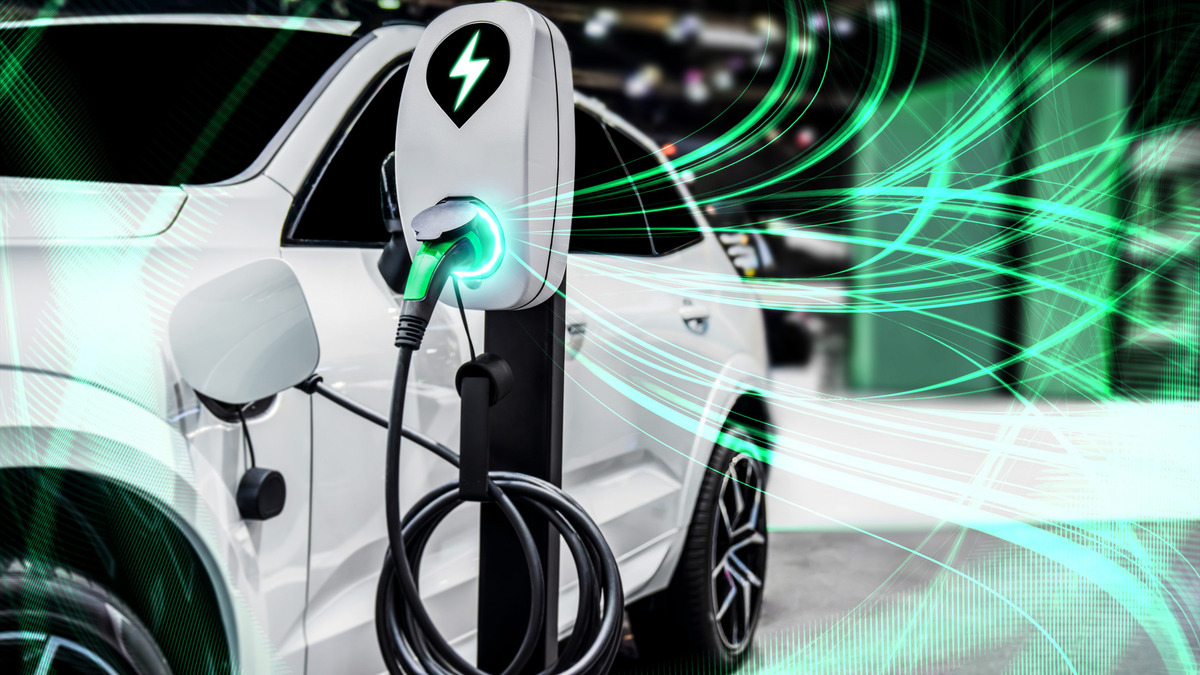Strategic Elements’ goal is for its moisture-based energy tech to provide a charge to an EV

Energy Ink generates electric energy from moisture in the air. Pic: via Getty Images.
- Lab testing shows Strategic Elements prototype Energy Ink tech has exceeded the power density of commercial solar cells
- The company aims to use the tech to provide a small charge to an electric vehicle
- Performance testing of a small device cell is planned in 2024
Special Report: Strategic Elements says its moisture based renewable energy technology – Energy Ink – has achieved unprecedented power density from moisture in the air and has set an ambitious goal to provide a charge to an electric car in future.
The Federal Government provides Strategic Elements’ (ASX:SOR) investors with unique potential tax benefits in return for the company backing higher-risk Australian innovation under the ‘Pooled Development Fund Program’.
SOR is backing 100% owned Australian Advanced Materials, which is working with a team from the University of New South Wales to develop the Energy Ink, a revolutionary new power source that generates electrical energy from moisture (humidity) in the air.
Today SOR announced that a prototype of the technology has achieved unprecedented power density from moisture in the air in a laboratory setting – exceeding that of solar cells used in commercial solar panels.
Power density is a measure of how much power can be produced in a given area and is a crucial metric for comparing emerging technologies with established systems.
Enough power to charge an electric car?
Technologies like the Energy Ink that use moisture as a high-power energy source have technical issues in low power density, short duration and material degradation, meaning there has been a preconception that moisture is only suitable for small devices.
To overcome this, SOR re-engineered Energy Ink to achieve a 1000-fold increase in power density in under 12 months, challenging the conventional notion that moisture is limited to powering small devices.
The company now has some big goals for the tech – including enough energy to drive an electric car.
“Our early-stage achievement expands the potential of the Energy Ink beyond small devices,” SOR MD Charles Murphy said.
“The 1,000-fold increase in power density in under 12 months represents a leap forward in harnessing moisture as an energy source.
“Achieving the required power and duration of high-power cells, as well as upscaling fabrication of numerous cells and electrodes, are formidable challenges for the Energy Ink.
“Notwithstanding this, we have set an ambitious goal for the coming year.
“That is, to generate energy from moisture in an apartment building parking bay overnight, store a small charge into an electric vehicle and drive it away.”
Performance testing in 2024
SOR says the pace of the progression in Energy Ink power density is highly encouraging, however, to reach technical feasibility in high-power cells the efficiency, stability and scalability need to be determined.
And while it does not view the tech as a competitor to solar, the company says the unique attributes of the Energy Ink could potentially enable it to complement solar or act as a solution for renewable energy where solar isn’t practical.
Energy Ink differs from other renewable energy technologies in its potential to regulate its energy source (moisture) within a dedicated unit, workable indoors/outdoors, day or night, which may improve versatility and consistency of supply.
It also offers energy generation from vertically stacked cells, offering higher output in less space, unlike solar, which needs to be horizontally laid out.
The tech is also the first of its kind to demonstrate the potential to power small devices by powering a commercial skin patch and associated sensor/Bluetooth.
In the near term, the company plans to upgrade the small device Energy Ink cell with technical innovations of the high-power Energy Ink cell.
Integration of these developments and initial performance testing of small device cells will be conducted in early 2024. Planning towards further development of high-power cells is already underway.
This article was developed in collaboration with Strategic Elements, a Stockhead advertiser at the time of publishing.
This article does not constitute financial product advice. You should consider obtaining independent advice before making any financial decisions.
Related Topics
UNLOCK INSIGHTS
Discover the untold stories of emerging ASX stocks.
Daily news and expert analysis, it's free to subscribe.
By proceeding, you confirm you understand that we handle personal information in accordance with our Privacy Policy.








